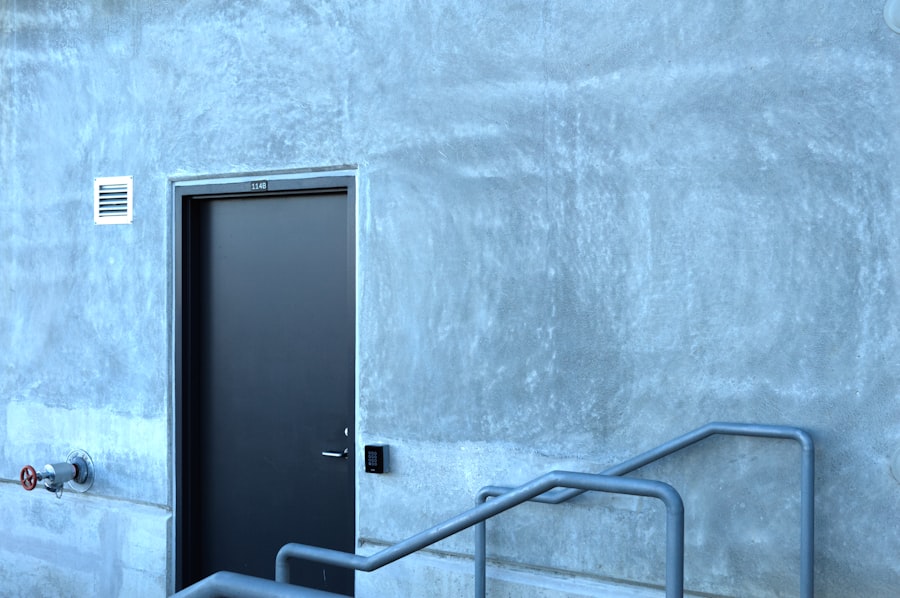The Pyramids of Giza, one of the most iconic symbols of ancient Egypt, have long captivated the imagination of historians, archaeologists, and tourists alike. Their construction dates back to around 2580–2560 BC, during the Fourth Dynasty of the Old Kingdom. Initially, access to these monumental structures was limited to the elite and those involved in their construction and maintenance.
As such, access was tightly controlled, with only select individuals permitted to enter the burial chambers and participate in the accompanying rituals. Over the centuries, as Egypt transitioned through various dynasties and foreign occupations, access to the pyramids evolved.
By the time of the Roman Empire, the pyramids had become a point of interest for travelers and scholars. However, it was not until the 19th century that significant numbers of tourists began to visit these ancient wonders. The advent of photography and travel literature further fueled public fascination, leading to a gradual opening up of access.
This shift marked a turning point in how the pyramids were perceived—not merely as tombs but as cultural treasures worthy of exploration and study.
Key Takeaways
- Access to the pyramids has evolved from unrestricted entry to regulated visitation to protect the sites.
- The Egyptian government plays a central role in managing access, balancing tourism and preservation.
- Archaeological concerns drive strict regulations to prevent damage and ensure long-term conservation.
- Security measures and local community involvement are key factors influencing visitor access and site management.
- Future access plans aim to balance public interest with the need to preserve the pyramids for generations.
Current Regulations and Restrictions
Today, access to the Pyramids of Giza is governed by a complex set of regulations designed to protect these ancient structures while accommodating millions of visitors each year. The Egyptian Ministry of Antiquities oversees these regulations, which include restrictions on where visitors can walk, touch, or take photographs. Certain areas around the pyramids are off-limits to ensure that both the structures and their surrounding environment remain intact.
For instance, climbing on the pyramids is strictly prohibited, a measure aimed at preserving their integrity and preventing damage from human activity. In addition to physical restrictions, there are also limitations on the number of visitors allowed at any given time. This is particularly true for the interior chambers of the Great Pyramid, where access is limited to small groups to minimize wear and tear on the ancient stonework.
These regulations reflect a growing awareness of the need to balance public interest with preservation efforts. While many visitors express frustration at these limitations, they are essential for ensuring that future generations can continue to appreciate these remarkable monuments.
The Role of the Egyptian Government

The Egyptian government plays a crucial role in managing access to the pyramids, balancing tourism with preservation efforts. Recognizing the economic benefits that tourism brings, officials have invested in infrastructure improvements around the Giza plateau. This includes enhanced visitor facilities, such as information centers and guided tours, which aim to educate tourists about the historical significance of the pyramids while ensuring their safety.
Moreover, the government has implemented various initiatives to promote sustainable tourism practices. These efforts include training local guides in responsible tourism and encouraging visitors to respect the site’s rules and regulations. By fostering a culture of respect for these ancient wonders, the government hopes to mitigate some of the negative impacts associated with mass tourism.
However, this balancing act is fraught with challenges, as officials must navigate competing interests from various stakeholders, including local communities, international organizations, and private investors.
Archaeological and Preservation Concerns
| Concern | Description | Impact | Mitigation Strategies | Measurement Metrics |
|---|---|---|---|---|
| Site Disturbance | Physical disruption of archaeological sites due to construction or natural events | Loss of context and artifacts, reduced research value | Site surveys, controlled excavation, protective barriers | Area disturbed (sq meters), number of artifacts displaced |
| Erosion | Soil and sediment loss exposing or damaging archaeological remains | Degradation of site integrity and artifact preservation | Vegetation planting, drainage control, erosion barriers | Rate of soil loss (tons/year), exposed artifact count |
| Looting and Vandalism | Unauthorized removal or destruction of artifacts and features | Irreversible loss of cultural heritage and data | Surveillance, community engagement, legal enforcement | Number of incidents reported, artifacts recovered |
| Environmental Degradation | Damage caused by pollution, acid rain, or climate change | Accelerated decay of materials and structures | Environmental monitoring, pollution control, climate adaptation | Pollutant levels, rate of material decay |
| Urban Development | Expansion of infrastructure impacting archaeological zones | Destruction or alteration of sites, loss of historical context | Planning regulations, impact assessments, site relocation | Number of sites affected, area converted (sq meters) |
| Preservation Funding | Availability of financial resources for conservation efforts | Ability to maintain and protect sites effectively | Grant applications, public-private partnerships, fundraising | Funds allocated, projects completed |
Archaeological concerns are paramount when it comes to access to the Pyramids of Giza. The delicate nature of these ancient structures means that even minor disturbances can have significant consequences for their preservation. Archaeologists argue that unrestricted access could lead to irreversible damage, not only to the pyramids themselves but also to the surrounding archaeological sites that hold invaluable historical information.
Preservation efforts are further complicated by environmental factors such as pollution and climate change. Dust and debris from nearby urban areas can accumulate on the pyramids, necessitating regular cleaning and maintenance. Additionally, rising temperatures and shifting weather patterns pose long-term threats to these ancient structures.
This ongoing dialogue between archaeologists and government officials is critical for developing effective strategies that safeguard Egypt’s cultural heritage.
The Influence of Tourism
Tourism has a profound influence on access to the Pyramids of Giza. As one of Egypt’s most visited sites, the pyramids attract millions of tourists each year, generating significant revenue for the local economy. This influx of visitors has led to increased investment in infrastructure and services around the site, including hotels, restaurants, and transportation options.
However, this economic boon comes with its own set of challenges. The sheer volume of tourists can strain local resources and create tensions between visitors and residents. Issues such as overcrowding and noise pollution have prompted calls for more sustainable tourism practices that prioritize both visitor experience and community well-being.
Additionally, there is an ongoing debate about how best to manage tourist expectations while preserving the integrity of the site. Striking this balance is essential for ensuring that tourism remains a viable source of income without compromising the historical significance of the pyramids.
Access for Researchers and Scholars

Access for researchers and scholars is another critical aspect of how the Pyramids of Giza are managed. Academic study plays a vital role in understanding these ancient structures and their historical context. However, researchers often face challenges when attempting to gain access to certain areas or artifacts within the site.
Bureaucratic hurdles can delay research projects or limit opportunities for collaboration with local institutions. Despite these challenges, many scholars continue to advocate for greater access to facilitate research efforts. Collaborative projects between international teams and Egyptian archaeologists have yielded significant insights into pyramid construction techniques and burial practices.
These partnerships not only enhance academic knowledge but also contribute to local capacity building by providing training opportunities for Egyptian scholars. As research continues to evolve, it is essential for authorities to recognize the value of academic inquiry in shaping public understanding of Egypt’s rich history.
The Impact of Security Measures
Security measures at the Pyramids of Giza have become increasingly stringent in recent years due to concerns about safety and preservation. Following incidents of unrest in Egypt during the Arab Spring, authorities implemented heightened security protocols aimed at protecting both tourists and cultural heritage sites. These measures include increased surveillance, security personnel presence, and restricted access to certain areas.
While these security measures are necessary for ensuring visitor safety, they can also create barriers for those seeking a more immersive experience at the site. Some visitors express frustration at feeling like they are being herded through a controlled environment rather than experiencing the pyramids in a meaningful way. Striking a balance between security and accessibility remains a challenge for authorities as they navigate an evolving landscape of threats while maintaining public interest in one of humanity’s greatest achievements.
Local Community Involvement
Local community involvement is crucial in shaping how access to the Pyramids of Giza is managed. Residents living near the site often have unique insights into its cultural significance and can play an essential role in promoting sustainable tourism practices. Engaging local communities in decision-making processes not only fosters a sense of ownership but also helps ensure that their voices are heard in discussions about access and preservation.
Various initiatives have emerged aimed at integrating local communities into tourism efforts around the pyramids. For example, programs that train residents as tour guides or artisans can provide economic opportunities while enhancing visitor experiences through authentic cultural exchanges. By involving local communities in tourism development, authorities can create a more inclusive approach that benefits both residents and visitors alike.
Controversies and Challenges
Controversies surrounding access to the Pyramids of Giza often arise from competing interests among various stakeholders. On one hand, there are those who advocate for unrestricted access as a means of promoting tourism and economic growth; on the other hand, preservationists argue that such an approach could jeopardize these ancient structures’ integrity. This ongoing debate highlights the complexities involved in managing one of humanity’s most significant archaeological sites.
Additionally, issues related to commercialization have sparked discussions about how best to balance profit motives with cultural heritage preservation. Some critics argue that excessive commercialization detracts from the site’s historical significance while others contend that it is necessary for funding ongoing preservation efforts. Navigating these controversies requires careful consideration of diverse perspectives while prioritizing long-term sustainability over short-term gains.
Future Possibilities for Access
Looking ahead, future possibilities for access to the Pyramids of Giza will likely involve innovative approaches that prioritize both preservation and visitor engagement. Advances in technology may offer new ways for tourists to experience these ancient wonders without compromising their integrity. Virtual reality experiences or augmented reality applications could provide immersive educational opportunities while minimizing physical impact on the site.
Furthermore, ongoing dialogue between stakeholders—including government officials, archaeologists, local communities, and tourists—will be essential in shaping future access policies. By fostering collaboration among diverse groups, authorities can develop strategies that reflect shared values while addressing pressing concerns related to preservation and sustainability.
Balancing Preservation with Public Access
Ultimately, balancing preservation with public access remains one of the most significant challenges facing those responsible for managing access to the Pyramids of Giza. As interest in these ancient structures continues to grow globally, it is imperative that authorities adopt a holistic approach that considers both cultural heritage preservation and visitor experience. This balance requires ongoing dialogue among stakeholders who share a commitment to safeguarding Egypt’s rich history while ensuring that future generations can appreciate its wonders firsthand.
By prioritizing sustainable practices that respect both archaeological integrity and public interest, authorities can create an environment where both preservation efforts thrive alongside meaningful public engagement with one of humanity’s most extraordinary achievements.
The question of who controls access to the pyramids has been a topic of much debate among historians and archaeologists. For a deeper understanding of the various factors influencing access to these ancient wonders, you can read more in the article available at this link. This article explores the historical, political, and cultural dimensions that shape the management and preservation of the pyramids today.
WATCH THIS! The Sphinx’s Secret Chamber: Why Egypt’s Government Forbids Scanning the Hall of Records
FAQs
Who is responsible for controlling access to the pyramids in Egypt?
Access to the pyramids in Egypt is primarily controlled by the Egyptian Ministry of Tourism and Antiquities. They oversee the preservation, security, and visitor management of these historic sites.
Are there any restrictions on visiting the pyramids?
Yes, there are restrictions to protect the pyramids and ensure visitor safety. These include regulated visiting hours, ticket requirements, and sometimes limits on the number of visitors allowed inside certain areas.
Can tourists enter all the pyramids?
Not all pyramids are open to the public. Some are closed for preservation reasons or ongoing archaeological work. Visitors can enter certain pyramids, such as the Great Pyramid of Giza, but access may be limited to specific chambers.
Who provides permits for archaeological research at the pyramids?
The Egyptian Ministry of Tourism and Antiquities issues permits for archaeological research and excavation at the pyramids. Researchers must apply and receive approval before conducting any work.
Is security present at the pyramid sites?
Yes, security personnel are stationed at the pyramid sites to protect the monuments from vandalism and theft, and to ensure the safety of visitors.
Are there any organizations involved in the preservation of the pyramids?
Several organizations, including the Egyptian government, UNESCO, and international archaeological teams, collaborate to preserve and maintain the pyramids.
Can access policies to the pyramids change over time?
Yes, access policies can change based on conservation needs, security concerns, or new archaeological discoveries. Visitors are advised to check current regulations before planning their visit.
